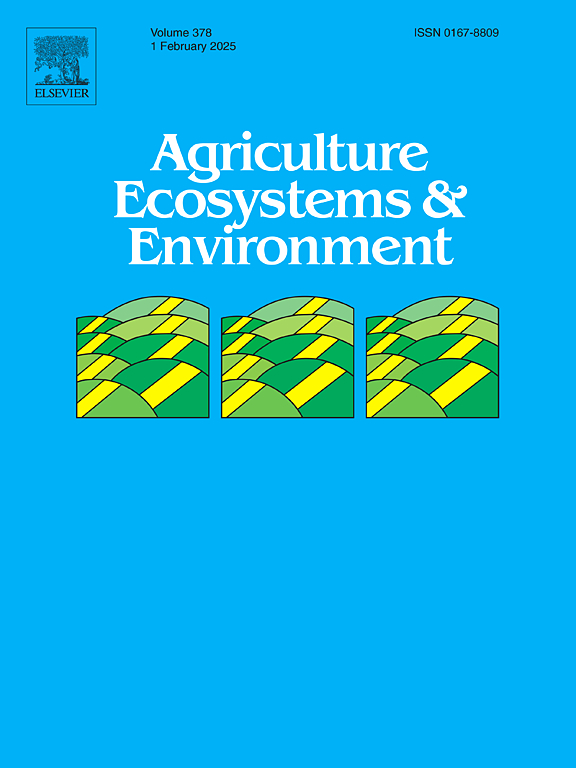利用广泛的间作数据集评估捕捉混合物效应的新间作模型
IF 6.4
1区 农林科学
Q1 AGRICULTURE, MULTIDISCIPLINARY
引用次数: 0
摘要
谷物和豆类间作与单作相比有许多优势。然而,间作作物的表现取决于植物基因型、管理和环境。由于田间试验的处理数量有限,基于过程的农业生态系统模型是评估间作系统性能的重要工具。本研究的目的是利用广泛的实验数据集校准和评估一个新的基于过程的间作模型,并检验该模型是否适用于比较间作管理策略。数据集包括 12 个不同春小麦品种(SW, Triticum aestivum L.)与两个蚕豆品种(FB, Vicia faba L.)在三种不同环境下以两种播种密度种植的所有组合。结果表明,间作模型能够模拟两种作物在谷物产量、地上生物量和表土根生物量方面的绝对混合物(间作)效应(AME)。然而,在模拟植株高度、截获辐射量、土壤容积含水量和表土根系生物量时,间作模型的表现并不优于忽略间作效应的基准。在谷物产量和地上部植物生物量方面,间作模型合理地预测了物种间和 SW 栽培品种间的差异。总之,所测试的基于过程的模型可以作为一种有用的工具,用于设计和预先评估适合不同条件下间作的作物管理、物种和栽培品种的多种组合。本文章由计算机程序翻译,如有差异,请以英文原文为准。
Evaluating a new intercrop model for capturing mixture effects with an extensive intercrop dataset
Cereal-legume intercrops have numerous advantages over monocultures. However, the intercrop’s performance depends on the plant genotypes, management, and environment. Process-based agro-ecosystem models are important tools to evaluate the performance of intercrop systems as field experiments are limited in the number of treatments. The objective of this study was to calibrate and evaluate a new process-based intercrop model using an extensive experimental data set and to test whether the model is suitable for comparing intercrop management strategies. The data set includes all combinations of 12 different spring wheat entries (SW, Triticum aestivum L.) with two faba bean (FB, Vicia faba L.) cultivars, at two sowing densities, in three different environments. The results show that the intercrop model was capable of simulating the absolute mixture (intercrop) effects (AME) for grain yield, above-ground biomass, and topsoil root biomass, for both crops. However, the intercrop model does not perform better than a benchmark that ignores the intercrop effects when simulating plant height, fraction of intercepted radiation, volumetric soil water content, and subsoil root biomass. The intercrop model predicted reasonably well the differences between species and between SW cultivars for grain yield and aboveground plant biomass. Overall, the tested process-based model can be a useful tool for designing and pre-evaluation multiple combinations of crop management, species, and cultivars suitable for intercropping in diverse conditions.
求助全文
通过发布文献求助,成功后即可免费获取论文全文。
去求助
来源期刊

Agriculture, Ecosystems & Environment
环境科学-环境科学
CiteScore
11.70
自引率
9.10%
发文量
392
审稿时长
26 days
期刊介绍:
Agriculture, Ecosystems and Environment publishes scientific articles dealing with the interface between agroecosystems and the natural environment, specifically how agriculture influences the environment and how changes in that environment impact agroecosystems. Preference is given to papers from experimental and observational research at the field, system or landscape level, from studies that enhance our understanding of processes using data-based biophysical modelling, and papers that bridge scientific disciplines and integrate knowledge. All papers should be placed in an international or wide comparative context.
 求助内容:
求助内容: 应助结果提醒方式:
应助结果提醒方式:


